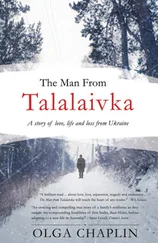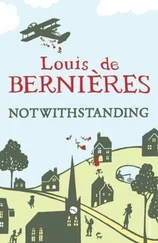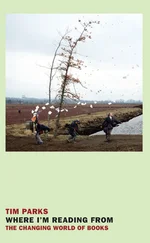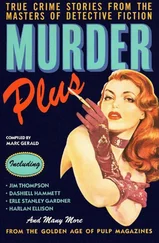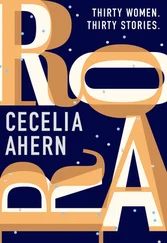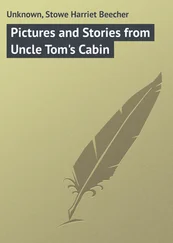The Tatarbunary Uprising was not the only one egged on by the Soviets in Bessarabia in these interwar years, but many of their other plans fizzled out completely. Still this history does give pause for thought. In the West these events can seem like very obscure historical details. But, if you are in Moscow and thinking about how to destabilize Ukraine, all this is part of the textbook, the back catalogue. One account of the uprising in English was published in 1927 by Charles Upson Clark, an American academic who knew Romania and Bessarabia well. He wrote that the region was:
honey combed with revolutionary organizations financed and directed from Soviet Russia. These exploited the post-war economic and political difficulties of the country, the mistakes of the new regime, all forms of discontent, intensified by financial stagnation and the drought; and indiscreet or corrupt Roumanian officials played into their hands.
And so, in our times, the story repeats itself. Modern Ukraine is similarly “honeycombed” with organizations and individuals tied in one way or another to Vladimir Putin’s Russia, whose authorities have exploited the dire economic and political situation created by Ukraine’s venal and corrupt politicians, giving those who look to Moscow a source of succor and support.
Today cars and trucks speed through Tatarbunary, which lies on either side of the road between the Danube port of Izmail and Odessa. People stop here for a meal or drink at the modest hotel just out of town which, over the Christmas period, displays over the porch an illuminated model of reindeer whose heads slowly move this way and that. Horses and carts trot past the 1924 memorial. On the other side is an ordinary building on the corner of the street with a metal onion-style dome atop a mini-steeple. It is the church of Father Vasily. It is an unusual place because it was not built as a church. Vasily is Gagauz and was a priest in Izmail for fifteen years, and his wife was Ukrainian, from Tatarbunary. She wanted to come back and did so with their four children. “I decided that nobody would feed or dress them or give them an education, so I left my church and came here.” Then he found this building and said, “God, if you will it, let it be a church.”
Religion in Ukraine can be complicated. The mainstream Orthodox Church is divided between the Moscow Patriarchate and the Kiev Patriarchate. There is also the Ukrainian Autocephalous Church, founded in 1921, and the Greek Catholic Church, which is part of the wider Catholic community but draws on Orthodox rites and traditions. Most priests in this region belong to the Moscow Patriarchate.

Father Vasily. Tatarbunary, December 2014.
Wanting to open his new church, Vasily went to his bishop, whom he described as an “agent” of Moscow, and said: “If you don’t give me permission I will go to Kiev.” The bishop said, “Calm down, Gagauz—I know you people have hot blood.” Vasily replied that there was someone “with higher rank than him” and went to Kiev to seek a blessing. But he could not get it there either. A scandal ensued, as he proceeded to open his own church unaffiliated with either patriarchate but, miracle of miracles, people in town began to arrive with icons, crucifixes and other religious artefacts, many of which they had kept hidden during the Soviet period and some of which had been saved from churches that had been destroyed. “I did not buy anything,” he said enthusiastically. There was an old man who, when he was younger, had had the job of shoveling coal into the furnace of a heating system, he said, pointing at a fine large image of Christ with a radiating golden halo. One day stuff from a church was brought in and he was told to shove it all in the fire. He burned the first item but, realizing no one was looking, he hid three more under piles of straw. Sometime later, a few years after the end of the Soviet Union, when Vasily opened his own church, the old man rescued the items from their hiding place, put them on a cart and brought them to him.
For those who go to church, their priest can be an influential figure, even telling them whom to vote for. During the 2010 presidential election Vasily said “the other priest” told his flock to vote for Yanukovych because he would be “an Orthodox president.” The “other priest” was clearly more influential. In this area, over 80 percent voted for Yanukovych’s Party of Regions. Now, says Vasily, “we see that part of the population is for Russia and part for Ukraine, and that is the same for Gagauz too.”
Up the street and round the corner, you come to the office of local ecologist and political activist Iryna Vykhrystyuk, who is forty-six years old. It is easy to find because it has solar panels on the roof and flies a Ukrainian flag. Iryna, blue-eyed and determined-looking, has about as deep roots as you can get around here. One branch of her family descends from Cossacks who settled in Tatarbunary in the 1790s. Some of her relatives took part in the uprising of 1924. It failed, she remarks tartly, because the help they expected to come from Odessa never arrived.
It is December and in the office of her organization, Vidro-dzhennia, which means “Renaissance,” there are Christmas cards made by children, to be sent to soldiers on the front. They say things like “Stay away from evil,” “May God protect you” and “We are waiting for you with victory.” Iryna has three sons, one of whom is fighting. He is a volunteer with the army, not with one of the many militias that have sprung up. At first the army refused to take him because they had not mobilized him, but he and others who were in a similar situation protested and the army relented.
Now Iryna is doing what she can to support Ukraine’s soldiers, and before that she supported the Maidan protests against Yanukovych, but much of her activist life since 1996 has been devoted to reversing the ruinous legacies of Soviet policies on the local ecology. What is stunning though is that so long after the collapse of the USSR she and her colleagues have not succeeded. The reasons for this are vested interests and corruption, a classic tale which, replicated thousands of times in different ways across Ukraine, does much to explain how the country has been reduced to such dire straits.
Tatarbunary, which means “Tatar Wells,” sits at the top of the 210-square-kilometer Sasyk liman , the lagoon-cum-estuary that runs out to the sea. At the mouth of Sasyk, as with neighboring limans , there is a broad sandbar, up to 500 meters wide in places. But the sandbar did not seal Sasyk off from the sea, so while small rivers ran into it, it was a saltwater lagoon and traditionally a source of fish to eat and sea salt to sell. On land the villagers grazed goats and sheep and Iryna’s ancestors began to plow up the steppe and plant vineyards. In the 1960s an ambitious project was approved by the Soviet authorities. The idea was to dam Sasyk by building a massive 14-kilometer-long dike along the sandbar, digging a 13.5-kilometer-long canal from the Danube and filling it with freshwater and thus make it the center of a huge irrigation project. (Switch to satellite mode and you can see all this easily with Google Maps.) The aim was to eventually link the Danube with the Dnieper in order to irrigate 8.7 milllion hectares of land.
Work began and Sasyk was closed off from the sea in 1978; irrigation began in 1981. Giant pumps extracted the salty water, which was being replaced with fresh Danube water. According to Iryna, the majority of people around Sasyk were enthusiastic. “There was not enough freshwater here.” People got their water from wells and small steppe rivers but now demand was escalating, especially due to the consumption of local kolkhozes or collective farms. They had, she says, good Ukrainian chernozem , the fertile “black earth” that Ukraine is famous for, but not enough water. “In Soviet times we always wanted to be ahead of America in terms of producing grain, wheat, corn, sunflowers and grain for cattle.” Before the advent of kolkhozes people knew how to look after their land and especially when to leave it fallow, which is particularly important when land is dry. “Then this system was destroyed.” The kolkhozes used all of the land all of the time and so it lost its potential and the soil degraded. Then came the Sasyk irrigation plan. Among some of the scientists who worked on the project there had been some skeptics but, according to Ivan Rusev, a well-known local ecologist and activist whom I also met, these were Soviet times and so they kept their heads down and did not want to fight against the prevailing trends. The project was disastrous. Instead of turning Sasyk into a freshwater lake, the result was that the earth in the newly irrigated land turned salty due to the fact that saltwater continued to enter Sasyk through springs and underground caverns.
Читать дальше


